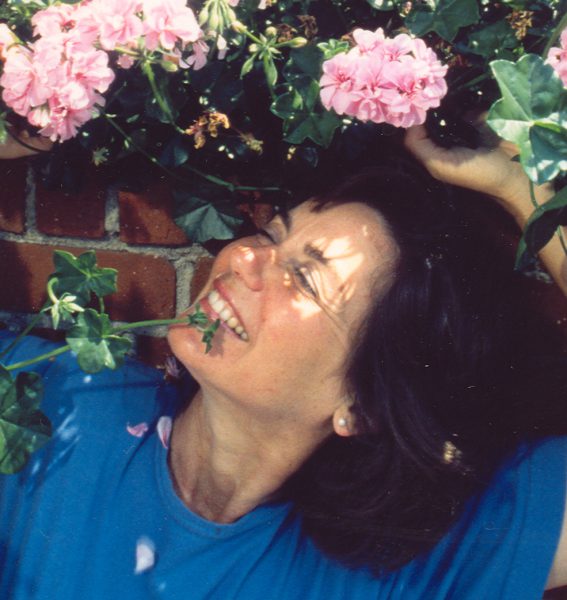 By Annlia Hill
By Annlia Hill
Joe Thurston’s parents, George and Sarah, were the first permanent settlers (1871) in Laguna Beach, homesteading what is now The Ranch in Laguna and Ben’s Brown Golf Course.
In 1919 Joe bought hillside property from Laguna Canyon to Bluebird Canyon, the 528-acre Rogers Place. (George and Lottie Rogers were Laguna’s other early settlers.) Joe’s wife, Marie Harding, was one of the first teachers in Laguna and became the first principal of Laguna Beach Grade School in 1913. Thurston Middle School (originally Marie Thurston Junior High) was built on land donated by Joe.
During their courtship, Joe told Marie he would build her a house. As she enjoyed looking up to the hills, he built Dream Knoll across the street from the “school on the hill” (present-day high school) in 1921. Local restaurateur Robert Boyd, his wife Doris Thurston (Marie’s daughter) and their children also lived across from the school. Son Kelly Boyd, 16-year Laguna City Councilman and 25-year co-owner of the Marine Room reported, “… the school district condemned our property and took it over.” (Is the LBUSD trying another “take-over” with a mega-dollar aquatic center?)
Joe’s first land development project in 1927 – the Virginia Park Project – was next to his home. Bounded by Virginia Park, Park, Manzanita, La Vista Drives, the neighborhood was one of the last subdivided prior to 1940. Many of the early homes remain intact, are good examples of the architectural preferences of the early 20th century (Period Revival, Craftsman, Bungalow, Beach Cottage), give a cohesive image as a hillside neighborhood, and greatly enhance the streetscapes. Although interesting houses, occupants and stories abound, we highlight only a few, starting on the quiet cul-de-sac of Virginia Park. This street loops around a park, a wooded serene median. (LBUSD suggested paving this for a “car park” not long ago.)
631 Virginia Park (1926 Cotswold Cottage). Designed by local architect Thomas Harper, Rose Cottage was modeled after a house in Normandy, France. After traveling extensively throughout Europe, he returned in time for Laguna’s 1920-30s building boom. Harper is best known for his Period Revival cottages, including this one and the Manzanita Cottages (732-738 Manzanita).
640 Virginia Park (1929 Spanish Revival bungalow). Sitting on a heavily vegetated lot reaching up to Hilledge, this historic house was designed by Aubrey St. Clair. St. Clair designed some of the most distinctive buildings in Laguna Beach, including City Hall and the Water District Building. Casamar was originally owned by Richard and Emma Bird, the second owners of the White House Cafe. They hung a sign “Let the Birds Feed You” in front of the restaurant.
732-738 Manzanita (1927 Period Revival cottages). Inspired by his travels, Thomas Harper designed these four cottages, each modeled after a residence of a different country — French chateau, Normandy cottage, Spanish cottage, Mexican cottage. The painted motifs were by local artist Al Dupont, who painted murals in the old South Coast Theater and the buried pirate treasure mural in the old Jolly Roger Restaurant. Centered around a wishing well, the cottages were commissioned by Hollywood actor-writer Harry Greene, who wanted a compound for beach getaways with friends such as Joan Crawford and Franchot Tone. In the 1930s, the cottages were sold to Guy and Ora Whitmore. Their daughter Jane Gilman (Aunt Jane to the neighbors) and her artist sister Willoughby Chamberlain owned this architectural jewel until 2000. (Chamberlain, incidentally, performed in the first Pageant of the Masters in 1933.) Granddaughter Ora Sterling, a 40-year Sawdust Festival exhibitor, had her ceramics studio here until the cottages sold and became The Manzanita Cottages.
758 Manzanita (1927 Mediterranean Revival). The 17-room estate commissioned by Claude Bronner sits on a 1-acre lot. Bronner’s White House Cafe did so well from its beginning in 1918 that he was reluctant to sell in 1926 when approached by the Bird family of Bird’s Cafe in San Juan Capistrano. Thinking the astronomical sum of $86,000 would not be met; he was shocked they offered cash. With the proceeds, he built El Castillo Mio, but before moving in, he sold it in 1933 to George Admaski (“Speaker and Teacher of Universal Laws and the Founder of Universal Progressive Christianity, Royal Order of Tibet and the monastery at Laguna Beach” and later ufologist) to become headquarters of the Royal Order of Tibet. After a few years, it became a private residence and, in 1971, Anneliese School.
791 Manzanita (1925-1929). Originally a garage, it was occupied for many years by artist Norman Stiles Chamberlain, an outstanding watercolor painter. Success came almost immediately to Chamberlain through the patronage of Arabella Huntington, the force behind the art collection at the Huntington Library. Chamberlain’s first painting in Laguna Beach, “North of Laguna,” was painted in 1914. In 1925, he sold “Temple Hills” to Joe Thurston. In 1933, Joe and Marie Thurston presented the Laguna Beach School with “a large and beautiful oil painting to be hung in the grammar school auditorium … the work of Norman Chamberlain showing the hills and old road through the canyon back of the school building.”
Although the 1993 wildfire destroyed most houses on the uphill side of Manzanita and La Vista, these fire-rebuilt homes add a mixed range of designs to the neighborhood. All clearly prefer human-scale construction with custom design in harmony with the natural terrain. (Will the LBUSD facilities plan that borders this neighborhood do the same?)
Annlia is a 50-year resident of Laguna Beach and married to a fourth-generation Lagunan. Having walked nearly every street and alley in town, she has observed firsthand the artistic charm and imagination of residents.





Thanks for this wonderful column. My friend David and I were inspired to take a Sunday drive around to see all the properties. Love learning new things about the town where we’ve lived for so long!